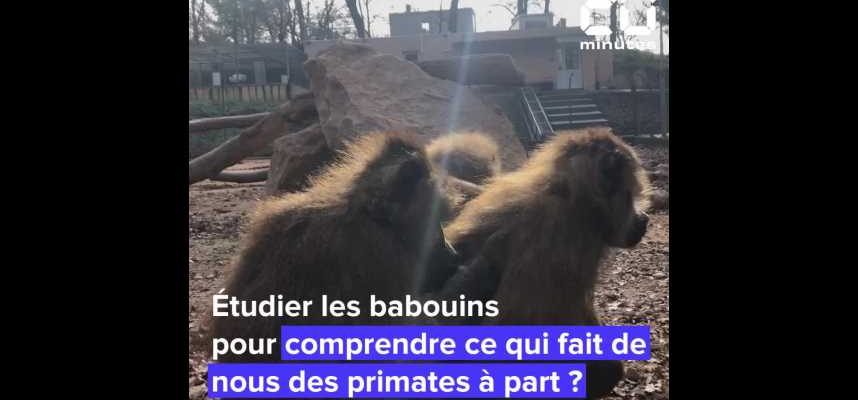If you start to lose faith in humanity, tired of the individualism of your colleagues or the selfishness of your worst enemy, remember the baboons. Because science is certain: if some people around you only seem to remember this word in Scrabble (at the same time, it can add up to a lot of points), the principle of altruism is indeed a common point between humans and our primate cousins, inherited the behavior of our same ancestor. In an article published in the journal Science Advances this Friday, two researchers from the cognitive psychology laboratory of the CNRS and the University of Aix-Marseille demonstrate that the famous “win/win” concept, theorized by a certain Ségolène Royal, is in reality a practice in force for a long time in baboons.
Eighteen of these primates from the Rousset primatology station (CNRS) were subjected to the same experiment, as explained by Anthony Fourmaux, one of the two researchers to carry out this study. “Our baboons are used to working on a voluntary basis, with touch screens,” explains the doctoral student at the University of Aix-Marseille. It has become a sort of daily routine for them, like video games. Faced with images displayed on the screen, they are used to having to find the right answer to obtain rewards and food. »
Selfish people ostracized
The researchers configured the places where the monkeys had access to the screens in a particular way to encourage them to do this activity in pairs. In detail, in the same space two screens are stored, one screen per primate. “When two monkeys are together on neighboring screens, they sometimes have the opportunity to cooperate to be rewarded. In this experiment, a first monkey has a choice to make between several images on the screen while the second has to wait in front of a black screen, adds Anthony Formaux. Among the choices proposed, the first image is a so-called prosocial image. If the individual chooses it, this results in the delivery of a reward for his partner and himself. If he chooses the other image, it only rewards him and is therefore a selfish choice. »
And the results are equivocal to say the least. “Half of the monkeys we observed cooperate and prefer the image which also gives a reward to their partner,” notes the doctoral student. Because the monkeys’ roles alternate from one trial to another, there is a logic of reciprocity: they have an interest in cooperating if their partner does so in return. »
Who are the bad baboons?
Because make no mistake: this altruism of baboons is far from being disinterested. It would even be the subject of a calculation for the rather individualistic move of the baboons. “We have noticed that baboons develop two types of strategy,” explains the doctoral student. If a baboon works with a partner who did not reward it in a previous trial, it may decide not to reward it in return. It’s the “give and take”. He may also decide to find a better partner. It’s the partner’s choice. In this way, baboons maintain cooperation in the group. »
And who are these awful individualist baboons who constitute the dark force of the Rousset monkeys? Here too, science is reassuring, because, according to researchers, these are not necessarily baboons with a bad background, but rather rather simple-minded baboons. “We think that the other half of the individuals did not understand the device and the task, perhaps too focused on their own screens,” suggests Anthony Fourmaux. To the wise…

